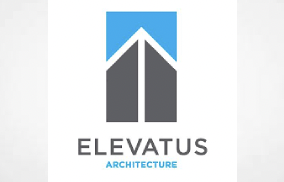Urggh
IAN BAZUR-PERSING WAS in a good place. Mental illness had dogged him for years, but by 2022, the 41-year-old was stable: settled into a sober living community in his hometown of Fort Wayne, Indiana, working for a lawn care company, and meditating regularly. He felt so good, in fact, that he went off his medication.
Within weeks, he was in a state of psychosis. He and his parents sought assistance from local emergency rooms and the city’s crisis intervention team, but they couldn’t get any real help. On Christmas Eve, armed with an axe and a hunting knife, Bazur-Persing — who’d never before committed a serious crime — performed three robberies in quick succession, walking away with $610, a pair of earbuds, and a Bluetooth speaker.
He landed in the Allen County jail. No one gave him a psychological evaluation to determine his mental health status, and when Bazur-Persing’s parents, mindful of their son’s suicidal tendencies, urged medical personnel to reach out to his longtime provider about medications he might need, they refused.
“It was substandard care,” Ian’s mother, Lori Bazur-Persing, recalled. The crowded facility where her son remained for 75 days pretrial was the opposite of therapeutic. “There are no recreational facilities, no going outside. The lights are on all the time. He said it’s just terrible.”
Allen County is under a federal judge’s order to address overcrowding and poor conditions; three people have died at the jail since October. County commissioners and the sheriff would like to tear it down and build a bigger, more modern detention center with a separate mental health unit — at an estimated cost of $320 million. Some Allen County residents, however, say the current jail could simply be remodeled, with overcrowding and behavioral health issues addressed by policy changes and investments in community services instead.
The Bazur-Persings agree. “What we need is not a bigger jail, it’s a better version of the jail we have,” Tim Bazur-Persing, Ian’s father, said at a public hearing last fall.
To make the case for the new jail, county officials have repeatedly pointed to a 2022 study they commissioned, which uses three different methodologies and a bevy of graphics to illustrate that Allen County will experience a steadily rising need for jail beds over time. The current facility was designed for 732 incarcerated people and held an average of 700 in 2023; the study predicts that by 2041, the county will need space for roughly 1,500 beds.
The study wasn’t conducted by a prominent criminal justice organization or consulting company. It was done by Elevatus, a Fort Wayne-based architecture firm that has designed jails all over Indiana and in several other states. For counties that are considering expanding their current jail or building a new one, Elevatus produces feasibility studies that usually predict growing incarceration needs. In many cases, Elevatus also wins a contract to draw up the plans for the facility it recommended.
“What we need is not a bigger jail, it’s a better version of the jail we have.”
That’s what happened in Allen County. Four months after Elevatus released its study, the company was hired to design the new jail. If the county’s elected officials approve the project, the firm’s design fees — factored as a percentage of the project’s total cost, as is standard for architecture firms — could be around $10 million. (Elevatus did not respond to The Intercept’s questions, and Allen County’s commissioners declined to comment.)
Elevatus is far from the only architecture firm creating feasibility studies and needs assessments that recommend substantially larger jails and then designing those buildings. Such blatant conflict of interest is occurring in counties all over the country, particularly in rural and conservative areas where local public safety agencies often operate with little scrutiny. These studies rely on thin data to justify spending millions of dollars in public funds. The most significant consequence, though, is that more people wind up incarcerated. As a common industry refrain goes, “If you build it, they will fill it.”
Projections Always Go Up
In public discourse about incarceration, the country’s 3,100 local jails tend to be eclipsed by prisons. That’s despite the fact that at any given moment in 2022, roughly a third of people incarcerated in the U.S. were detained in county or city jails. Seventy percent of them had not yet been convicted of any crime. Jails tend to hold people for shorter periods and see many return visitors; between July 2021 and June 2022, jail facilities around the nation recorded 7.3 million admissions.
While prison and big urban jail populations have declined in recent years, those numbers have swelled in more rural counties due to state and federal prisoners being sent to county facilities and an increased use of pretrial detention. Many jails are at capacity or overcrowded (defined as more than 80 percent full) and may be decades old and in serious disrepair.
Commissioners and other elected officials considering expansion frequently turn to architecture firms that specialize in detention facilities to predict how many jail beds they’ll need down the line. In some states, the studies are mandated by law, and the companies are viewed as experts. Requests for study proposals rarely preclude the winning firms from later designing the facilities.
Most of the reports include legitimate design products like architectural drawings and space studies. Some also present pages of graphs and charts showing who has been in custody, when, why, and for how long. But the studies rarely analyze the bulk of that data to determine future incarceration trends; instead, most ground their projections solely on past population or incarceration numbers, seemingly undergirded by the maxim that crime will always get worse.




